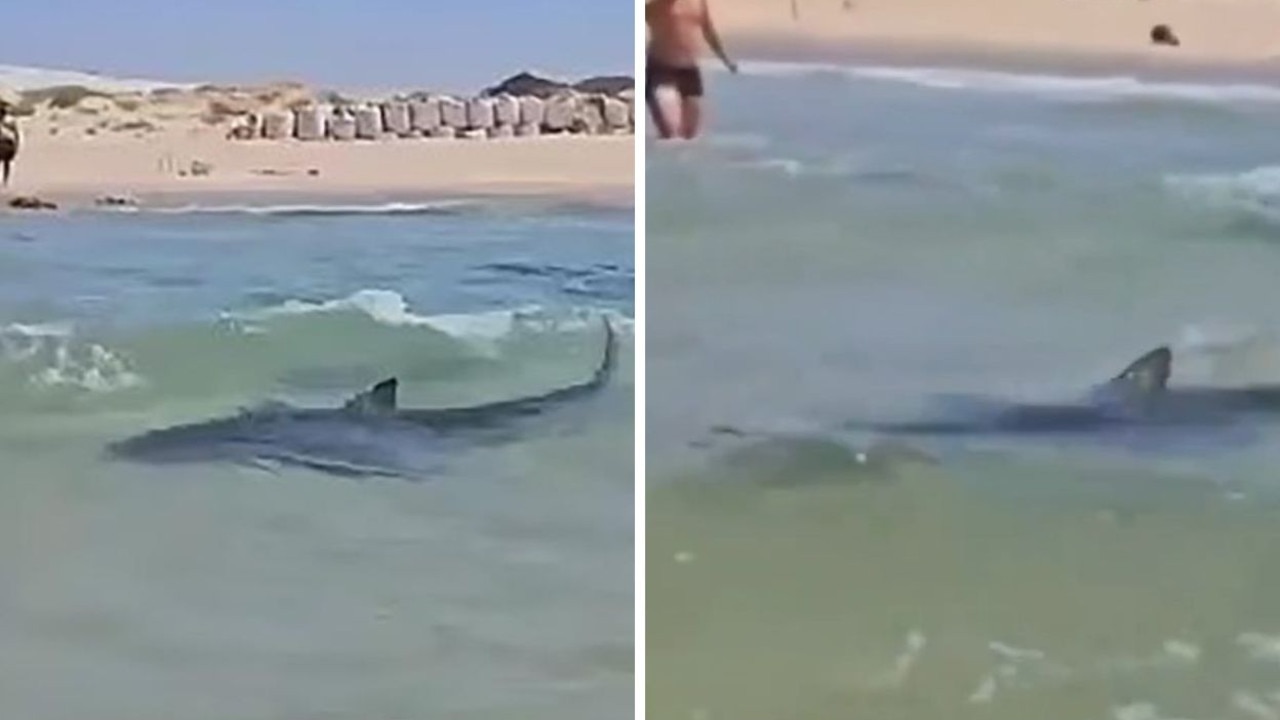World’s largest invertebrate captured on camera in habitat for the first time
A colossal squid, the world’s largest invertebrate, has been captured on camera in habitat for the first time.
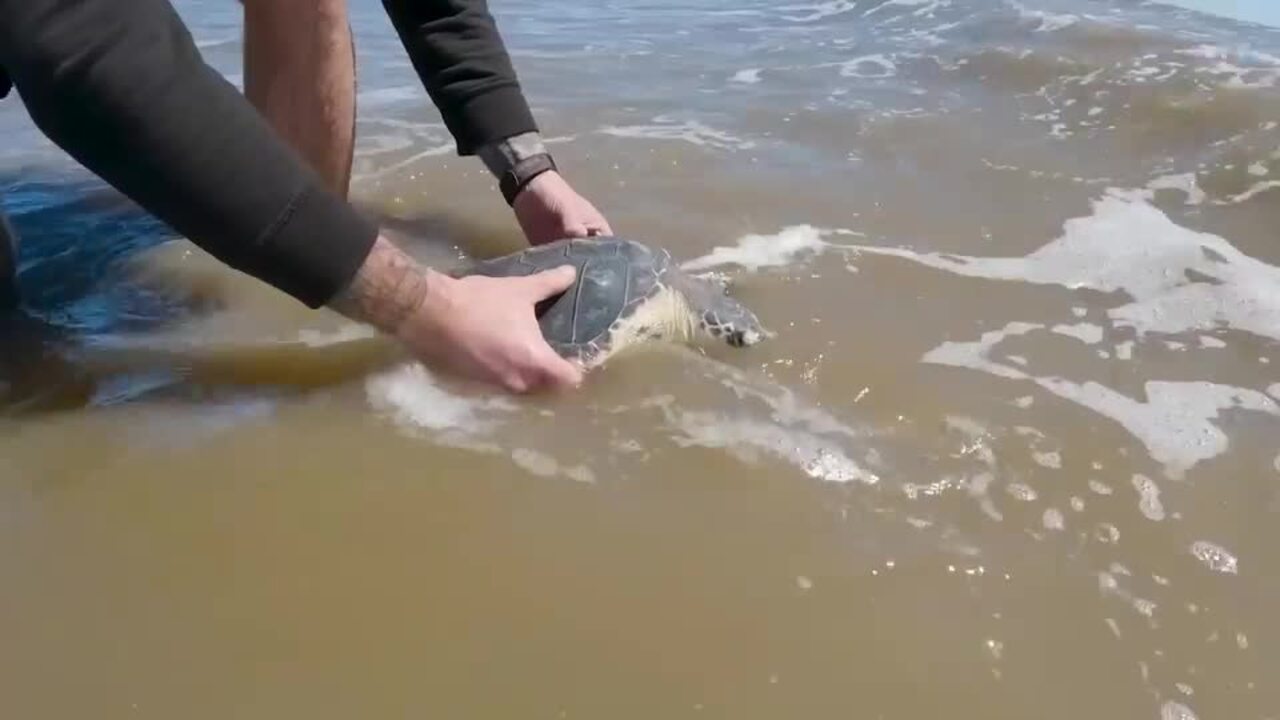
Animals
Don't miss out on the headlines from Animals. Followed categories will be added to My News.
They got it on squid-eo.
Scientists proved that the sea still holds some big mysteries after capturing footage of the colossal squid — the largest invertebrate on the planet — in its habitat for the first time.
“This is the first confirmed footage of the colossal squid at home in the deep sea,” said Kat Bolstad, a squid researcher at the Auckland University of Technology in New Zealand who verified the footage National Geographic reported. “This is honestly one of the most exciting observations we’ve had.”

The watershed video was taken last month off the Sandwich Islands by a remotely piloted submersible deployed by scientists with the Schmidt Ocean Institute.
In it, the translucent juvenile cephalopod scooted along in the Southern Ocean at a depth of nearly 2,000 feet — a sight that reportedly caused squid expert Aaron Evans to start “hyperventilating” out of excitement.
This adolescent specimen only measured around 30 centimetres long.
However, adult colossal squid can grow to lengths of 10 metres long and weigh 500 kilograms, making them the world’s largest invertebrate — even bigger than the famed giant squid immortalised by Jules Verne’s “20,000 Leagues Under the Sea,” Live Science reported.
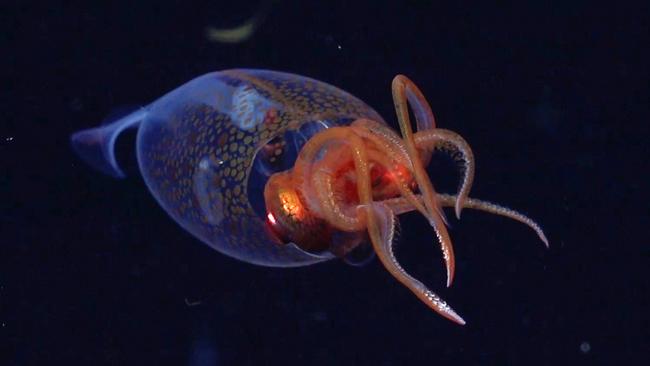

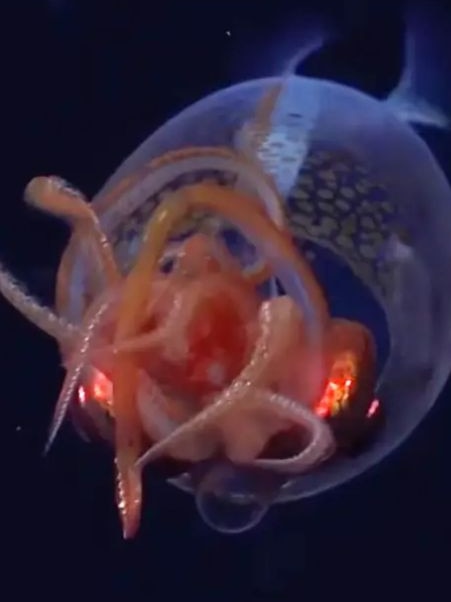
The Kraken-esque critter also has the largest eyes of any animal, measuring around 28 centimetres across or about the same size as a soccer ball.
Despite its massive size, this colossal calamari has never been filmed in its natural, deep-sea habitat — until now.
Prior footage mainly showed the massive mollusc, which resides in deep Antarctic waters, close to death near the surface — often after being snagged accidentally by fishing trawlers.
The first complete specimen was inadvertently caught in 2007 by a fishing vessel off Antarctica.
Most of what we know about colossal squid comes from remains found in sperm whale stomachs, as was the case with its initial discovery in 1925, when marine biologist James Erik Hamilton found two of its arms in one of these predatory cetacean’s bellies.
Bolstad claims that the mysterious squid’s camera shyness has to do with their world-record peepers, which are sensitive to the light given off by submersibles.
“They know we are there long before we know they are there,” she told NatGeo. “They are actively avoiding us.”
As a result, we know very little about the species’ diet, lifespan or reproductive habits, NPR reported.
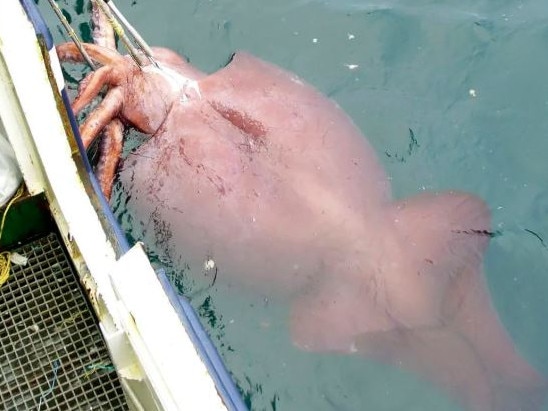
With this watershed discovery, however, the team believes they’ll be able to shed light on how the animals behave when they’re young.
Colossal squid belong to the glass squid family, hence their babies’ transparency, which grows more opaque as they age.
They primarily feed on medium-sized Antarctic fish such as the Patagonian toothfish, possibly ensnaring them with the distinctive hooks on their tentacles.
However, contrary to what their formidable size and name might suggest, these marine behemoths are not at the top of the food chain.

Conversely, juvenile colossal squid are frequently targeted by elephant seals and penguins while adults often fall prey to sleeper sharks and sperm whales.
Although the scars on the latter indicate that they don’t go down without a fight.
This discovery comes just months after another Schmidt expedition captured footage of the glacial glass squid, a similar species that had also never been seen in its natural environment before.
“The first sighting of two different squids on back-to-back expeditions is remarkable,” declared Jyotika Virmani, the executive director of the Schmidt Ocean Institute, in a statement. “These unforgettable moments continue to remind us that the ocean is brimming with mysteries yet to be solved.”
This story originally appeared on New York Post and was reproduced with permission
Originally published as World’s largest invertebrate captured on camera in habitat for the first time




